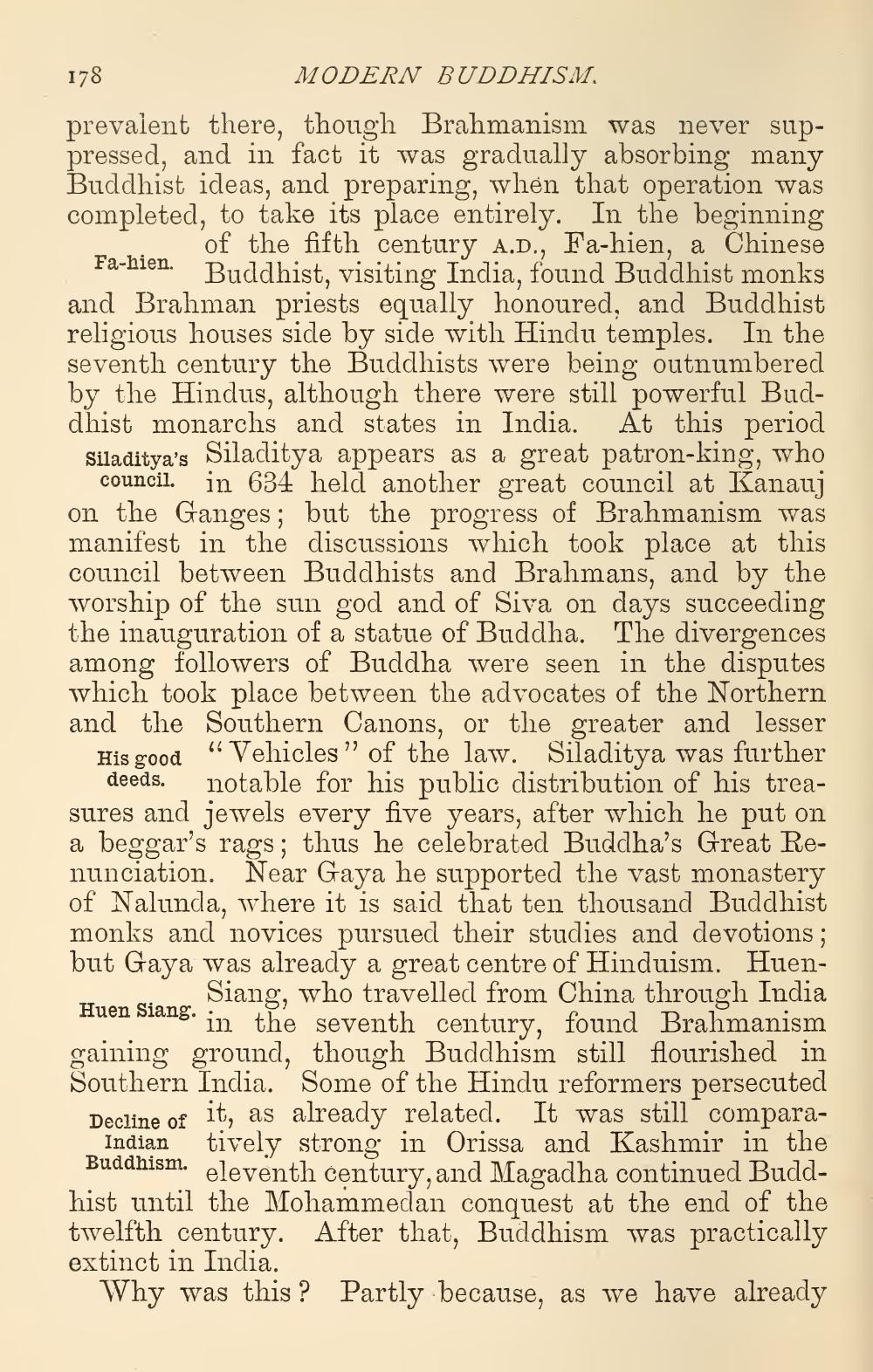________________
178
MODERN BUDDHISM. prevalent there, though Brahmanism was never suppressed, and in fact it was gradually absorbing many Buddhist ideas, and preparing, when that operation was completed, to take its place entirely. In the beginning
of the fifth century A.D., Fa-hien, a Chinese Fa-hien. Buddhist, visiting India, found Buddhist monks and Brahman priests equally honoured, and Buddhist religious houses side by side with Hindu temples. In the seventh century the Buddhists were being outnumbered by the Hindus, although there were still powerful Buddhist monarchs and states in India. At this period Siladitya's Siladitya appears as a great patron-king, who
council. in 634 held another great council at Kanauj on the Ganges; but the progress of Brahmanism was manifest in the discussions which took place at this council between Buddhists and Brahmans, and by the worship of the sun god and of Siva on days succeeding the inauguration of a statue of Buddha. The divergences among followers of Buddha were seen in the disputes which took place between the advocates of the Northern and the Southern Canons, or the greater and lesser His good “Vehicles” of the law. Siladitya was further
deeds. notable for his public distribution of his treasures and jewels every five years, after which he put on a beggar's rags; thus he celebrated Buddha's Great Renunciation. Near Gaya he supported the vast monastery of Nalunda, where it is said that ten thousand Buddhist monks and novices pursued their studies and devotions; but Gaya was already a great centre of Hinduism. Huen
Siang, who travelled from China through India Huen
den siang in the seventh century, found Brahmanism gaining ground, though Buddhism still flourished in Southern India. Some of the Hindu reformers persecuted Decline of it, as already related. It was still comparaIndian tively strong in Orissa and Kashmir in the
m. eleventh century, and Magadha continued Buddhist until the Mohammedan conquest at the end of the twelfth century. After that, Buddhism was practically extinct in India.
Why was this? Partly because, as we have already
Buddhism.




